-
Australia
Copyright © 2025 Powered by BCI Media Group Pty Ltd
Notification
Select Country
Get in Touch
By clicking send message you agree to our
Terms of Use and Privacy Policy
By clicking send message you agree to our
Terms of Use and Privacy Policy
Confirm Submission
Are you sure want to adding all Products to your Library?
Cancel
Contact Detail
Phone Number
Viber

Fibre Cement Facade Material
When Ludwig Hatschek invented fibre cement in the late 19th century, he combined the basic elements of the earth: mineral materials, water, air and fire (heat) in a simple filtration process. Our mother company, Etex, has been manufacturing fibre cement materials since 1905. The most prestigious incarnation in this proud heritage of unique materials is the EQUITONE® facade material range.
Hatschek Production
This process makes each EQUITONE facade panel unique with an individual fibre cement texture. Most EQUITONE facade materials are through-coloured with a raw, unfinished character.
In the 1950s leading architects such as Walter Gropius pioneered the use of coated fibre cement panels using the ventilated facade (rainscreen) system. Designer Willy Guhl created the famous “loop chair” from 1 piece of fibre cement in 1954. This design still bears witness to the core qualities of the fibre cement base material: thin, light, durable and beautiful. In 1987, Herzog & De Meuron designed the Ricola storage building in Laufen using uncoated fibre cement panels.
The resulting shutter facade, which is a reference to the cardboard boxes inside, inspired our company to start the industrial development of raw untreated fibre cement materials.
Alera Architect





